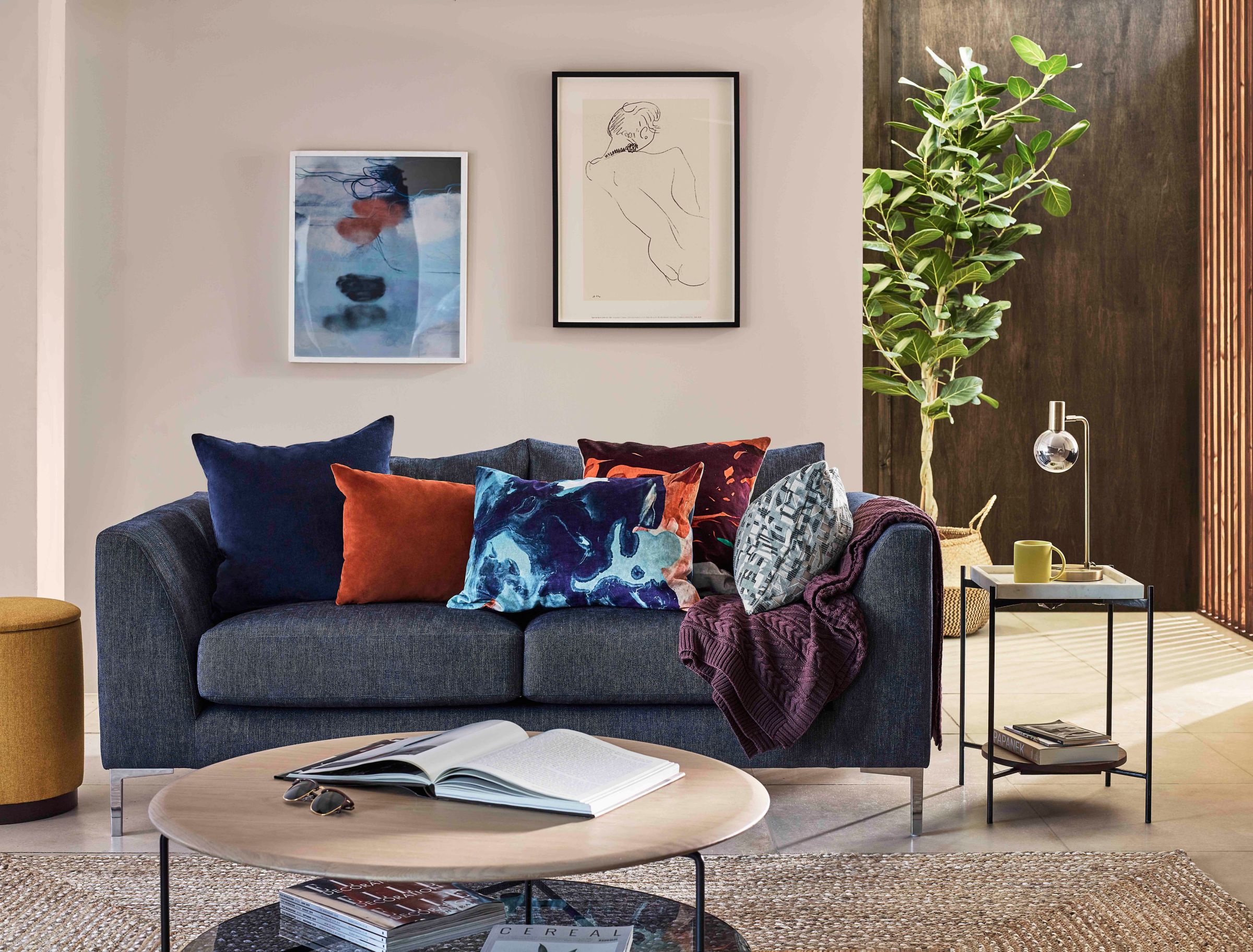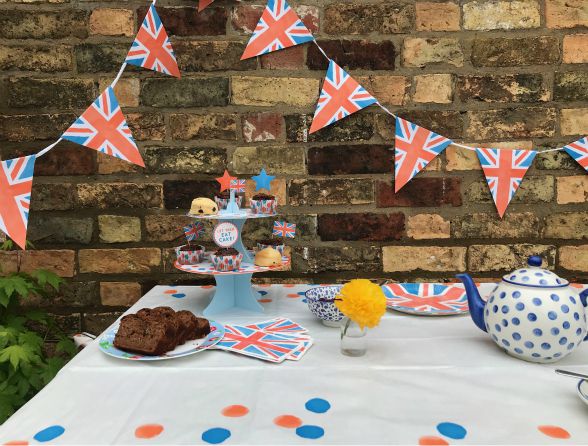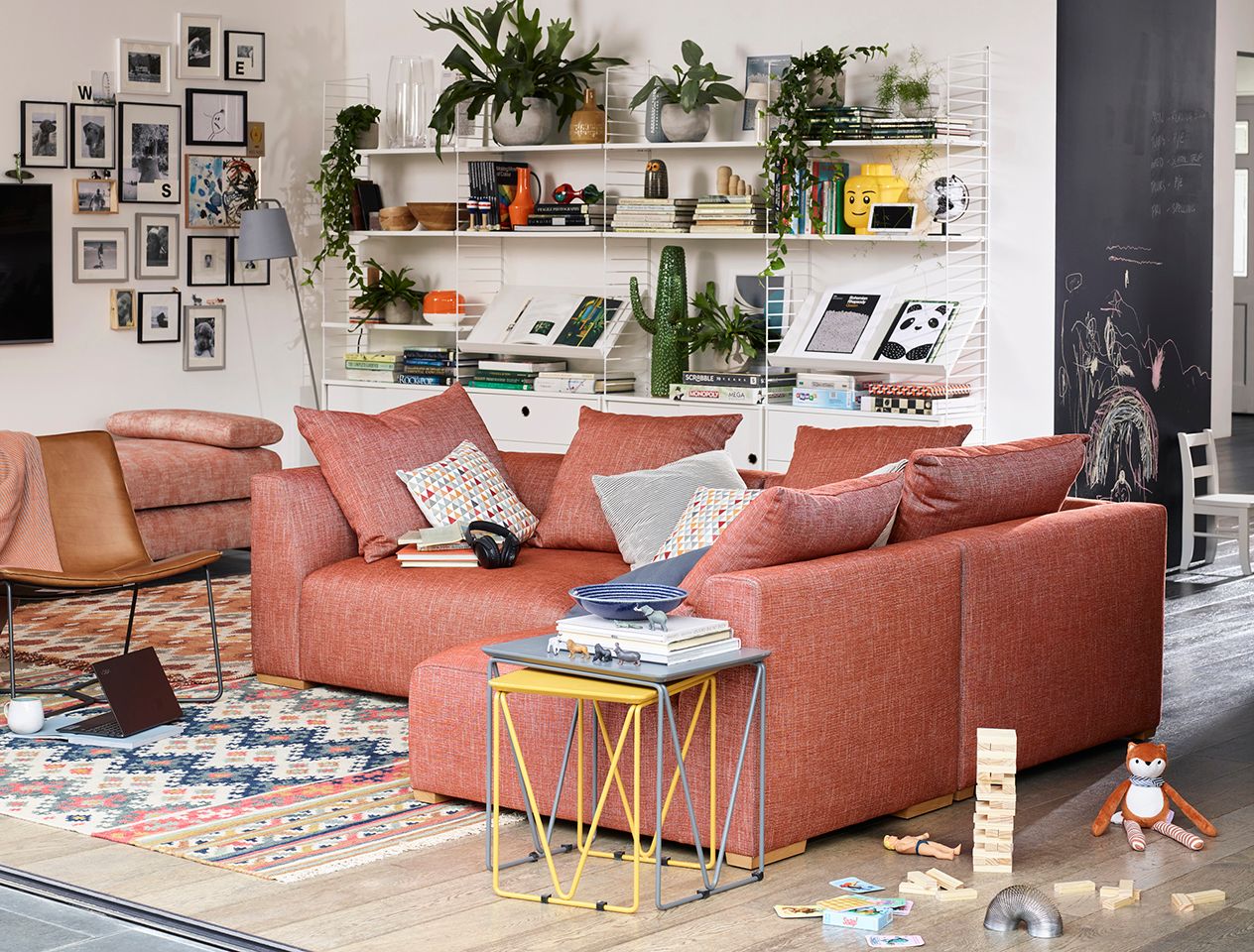5 pattern rules you need to know
Our experts share their favourite pattern tricks
Unsure how to pull off that eclectic, maximalist, pattern-rich look that echoes the bohemia of a Parisian boudoir, circa 1965? Or just want to add a few patterned cushions to your sofa? There are a few pattern rules that you need to know first.
Put your ‘brave’ pants on
Being bold with pattern takes confidence; it’s not a look for shy, retiring types. ‘Bold, contrasting colours, mixing geometric designs with florals… anything goes. It's an eclectic pattern-rich scheme that is all about experimenting,’ says Siobhan Currie, Partner & Senior Designer Home Textiles. ‘The key is to choose pieces that you love individually. Mixing new finds with pieces you’ve owned and loved for years or which you’ve picked up on your travels is a great way of curating an eclectic and individual space.’
Vary the scale
To stop prints competing with each other, interior designer Amy Jones says you need to look at how small and large-scale prints work together. ‘It’s the difference in scale that stops them fighting for our attention,’ she explains. ‘I also always make sure that there is a common colour that runs throughout the different prints – say a big blue floral with a fine blue stripe. This gives unity to your scheme and is more restful on the eye than lots of clashing prints.’
Amy always tries to see a sample of a pattern first, to get an idea of its scale. ‘How much pattern you include on a moodboard depends on whether you are a maximalist or not. I like to have around 30% of a moodboard dedicated to pattern to provide interest, although I work by eye a lot, too.’
‘Too much pattern in a room can feel overwhelming,’ agrees Siobhan. ‘Try choosing one statement piece and coordinating with more subtle, smaller scale patterns to get the balance just right.’
Provide visual pauses
‘Always break up patterns with solid pieces of colour,’ Amy recommends. ‘The eye needs a place to rest – it can be a bit overwhelming if all it sees is layer upon layer of different patterns.’ Try a painted feature wall or choosing a plain velvet sofa to provide that ‘break’ to the patterns vying for attention nearby.
'I always include plenty of plains and textures – like a patterned duvet cover mixed with solid-colour cushions, thows and lampshades,’ explains Siobhan. ‘This allows you to create an eclectic mood that’s easy to add or change when the mood takes you.’
Keep intensity levels the same
For Amy, one of her pattern hates is seeing colour and prints that don’t have the same level of intensity being used together. ‘You need to make sure all the hues work as one otherwise it can be quite jarring. For instance, I would never pair something with a black background and a bold jewel colour, with something that has a white background and pastel colours.’
New to pattern? ‘Try starting a pattern-rich scheme with a statement design like our Seoni bed linen,’ says Siobhan. ‘Then mix in smaller-scale geometric patterns, simple stripes and textured patterns in a unified colour palette.’
Try tone-on-tone patterns
‘For an elegant and simpler way of layering pattern in a room, try tone-on-tone prints,’ suggests Amy. ‘So using lots of patterns and prints in blue, as an example, would be a great way of incorporating lots of pattern into a room without it being overwhelming.’ Amy also advises spreading the pattern hits around a room, creating a cohesive look rather than ‘one big pattern hit’.
EDITOR’S TOP PICKS












